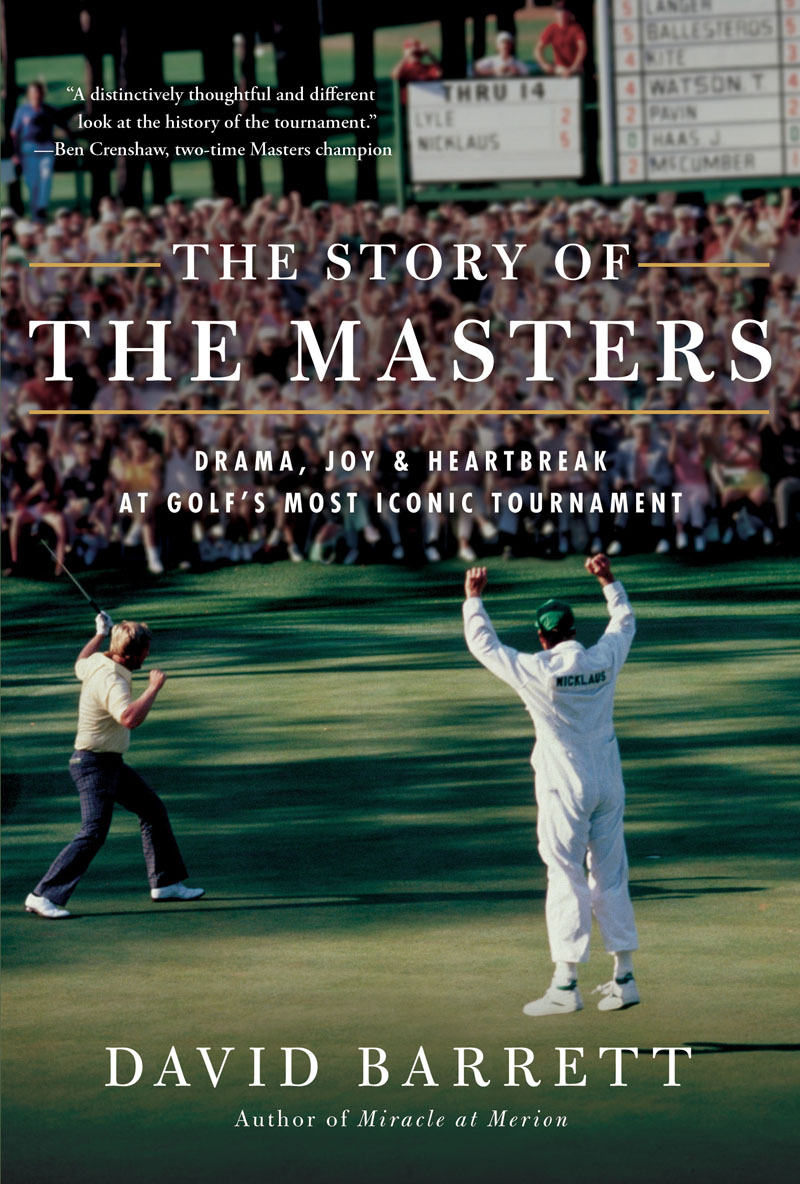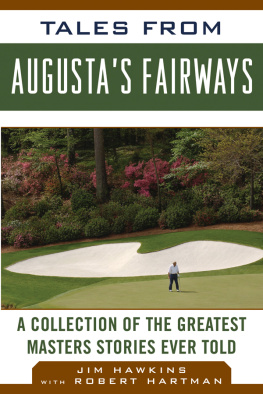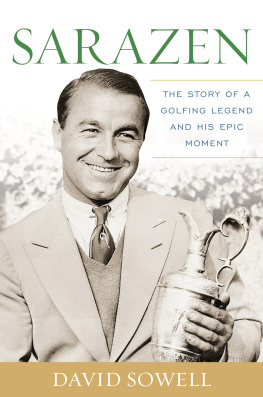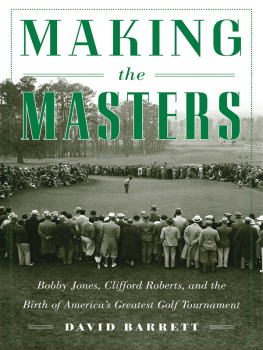

By the Same Author:
Miracle at Merion
Making the Masters
Golf Courses of the U.S. Open
Golfs Dream 18s
Golfing With Dad
Golf Magazines Golf Rules Explained
The Story of the Masters
Drama, Joy and Heartbreak at Golfs Most Iconic Tournament
Copyright 2021 by David Barrett
All rights reserved. Printed in the United States of America. No part of this book may be used or reproduced in any way without written permission from the publisher, except in cases of brief quotations in reviews.
Library of Congress Control Number: 2020945617
ISBN: 978-1732222724
First Edition: March, 2021
Tatra Press LLC
Distributed by Independent Publishers Group, Baker & Taylor and Ingram
Cover design by Mimi Bark
Interior designed by Isabella Piestrzynska, Umbrella Graphics
Media, special sales and permissions:
Chris Sulavik (Tatra Press) at or 646-644-6236
Front cover image: Jack Nicklaus and his son Jackie at the 1986 Masters (Getty Images).
Printed and bound in the USA by Sheridan, Chelsea, Michigan

Tatra Press
4 Park Trail
Croton-on-Hudson, NY 10520 www.tatrapress.com
For Mom and Dad,
Ludmila, Michael and Sophia
and the sportswriters of the Augusta Chronicle through the decades

Contents
Preface

The Conception
W hen amateur great Bobby Jones retired from competition, he didnt want to pull away from the game completely. After winning the Grand Slam of the U.S. and British Opens and Amateurs in 1930, Jones simply was tired of the tournament grind. His big idea now was to start a golf club.
As early as the mid-1920s, Jones had shared that vision with Clifford Roberts, a New York investment banker he met through a mutual friend. Upon Jones retirement, Roberts set out to make the dream a reality and quickly found a piece of property in Augusta, Georgia, that seemed perfect.
Formerly a prominent tree nursery, the property known as Fruitlands had been the planned site of a resort hotel and golf course, a venture that fizzled out in 1926. The land was available for a good price during the Depression, and, when Jones first saw it, his immediate thought was that this land had been lying here for years waiting for someone to lay a golf course upon it, as he later wrote in Golf Is My Game.
The location of what would become Augusta National Golf Club suited Jones in another way. Augusta was reasonably close to Jones native Atlanta, where he now practiced law, but at a lower elevation with a milder climate in the winter months. That made it a winter destination for well-to-do Northerners (Roberts among them), who were just the kind of people that Jones and Roberts wanted to attract for their national membership.
That was all well and good, but there was a fundamental problem. During those hard economic times, it wasnt easy attracting members, even with the connections enjoyed by Jones and Roberts. The club faced serious financial difficulties and was delinquent in paying the costs of course construction. Without an influx of additional members, the outlook was grim.
Still, the club had managed to open, boasting an excellent course designed by Jones with architect Alister MacKenzie. The opening ceremony in January of 1933 attracted a number of USGA officials, who were fans and friends of Jones, the winner of four U.S. Opens and five U.S. Amateurs. They were very impressed with the golf course, so much so that they discussed it as a possible site for the 1934 U.S. Open.
Unfortunately, Augusta National was founded as a winter-to-early-spring club and wouldnt be open when the U.S. Open was held in June. Moving the Open to March was considered, but that was a problem because it was too early for sectional qualifying in the North. In April of 1933, USGA president Herbert Jaques wrote Roberts that whereas we are favorably inclined toward this move in the near future, we do not think it is practical to attempt in 1934.
Roberts already had an idea of his own. What if Augusta National held a tournament itself? The publicity generated by the event would likely attract new members and help lift the club out of its financial troubles. A key to the event making a big national splash would be Jones entering as a competitor.
Jones had no plans, or particular desire, to ever compete again. But his greatest wish was to see Augusta National succeed, and he agreed that his playing in a tournament hosted by the club was the best way to make that happen.
Thus, the Masters was bornalmost. It would take money to stage a tournament, and the club was short on cash. Roberts went to the City of Augusta asking for $10,000 to make the tournament a reality. Augustas city council said yes, deciding that the tournament would attract out-of-town visitors from northern climes to fill resort hotels during tournament week, and that the publicity would serve as a promotion that would attract future winter-season visitors.
In August of 1933, the tournament was announced in a column by famous sportswriter Grantland Rice, who was an Augusta National member. Officially, it would be known until 1939 as the Augusta National Invitation Tournament, because Jones thought Masters was presumptuous. However, Roberts and other club officials had already pitched it as the Masters, and thats what it was called from the outset in the Augusta Chronicle, the wire services, and nearly every newspaper.
In December, Rice was interviewed by the local paper and predicted that the new tournament will eventually equal the National Open [U.S. Open] in importance. He wasnt wrong.
19341942

The Early Years
T he Masters didnt need any time to establish itself as one of the top tournaments in the game. The presence of Bobby Jones in the field of the inaugural Masters in 1934 garnered an elevated status. Jones had become an iconic figure by the time of his Grand Slam accomplishment and subsequent retirement at age 28 in 1930. Four years later, he was still young enough that his return to competitioneven for a single eventdrew more press coverage than any tournament outside the U.S. Open.
The results in 1934 and subsequent years made it clear that there was too much rust for Jones to play anywhere close to the way he did in his prime. As it turned out, the Masters didnt need that. In the tournaments second year, the press corps reported on Gene Sarazens stunning double eagle on the 15th hole of the final round and subsequent playoff victory. Augusta National quickly became known as the stage for heroics by the games best players.
Onetime boy wonder Horton Smith mounted a late charge of his own in 1936 to win his second Masters, Byron Nelson stormed through what would become known as Amen Corner in 1937 to establish himself as a coming star, and Ralph Guldahl shot a 33 on the back nine in 1939 to add Masters glory to his two U.S. Open titles. Masters champions Henry Picard (1938), Jimmy Demaret (1940), Craig Wood (1941), and Nelson again (1942) were all upper echelon players at the time of their victories.
Next page













